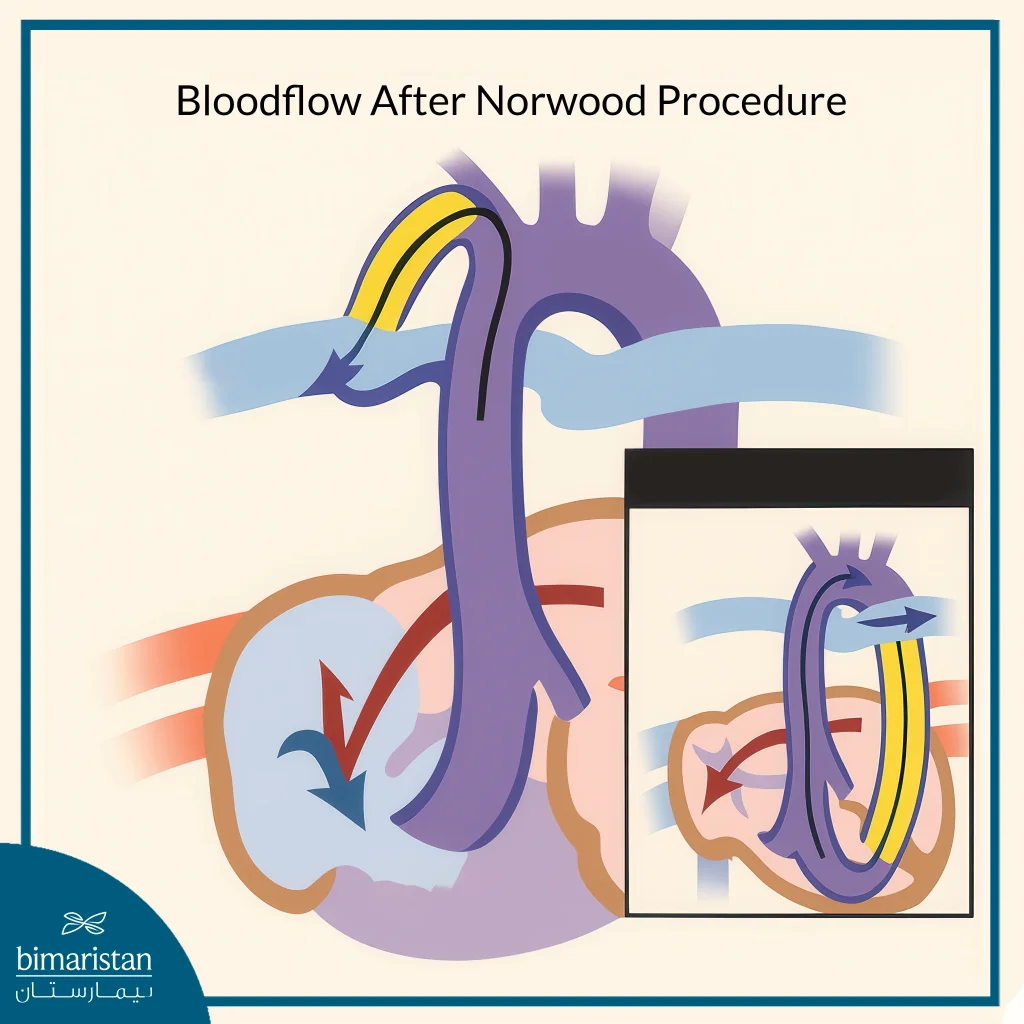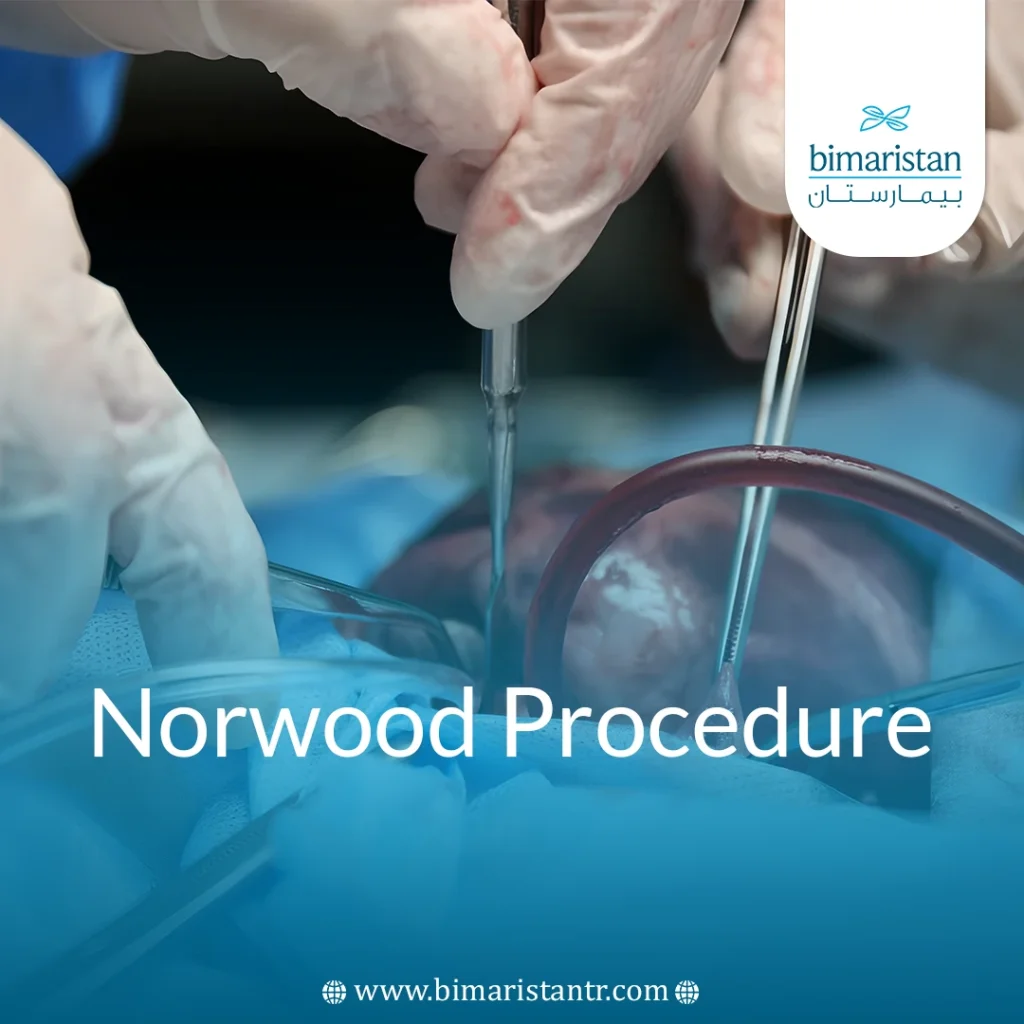The Norwood procedure is one of the most important surgical interventions in pediatric cardiology, carried out in the first days of life of some newborns with serious congenital heart defects such as children with hypoplastic left heart syndrome (HLHS), this surgery aims to reshape the blood flow pathway in an underdeveloped heart and gives these children a chance for life through a complex multi-stage treatment plan, despite the remarkable progress in surgical techniques, this operation remains crucial and requires careful long-term follow-up to ensure the best possible results.
What is hypoplastic left heart syndrome (HLHS)?
Hypoplastic Left Heart Syndrome (HLHS) is one of the most serious congenital defects that affects a child’s heart from the time they are in the womb. In this condition, the left side of the heart does not develop, as the left ventricle is too small or non-existent and the valves that regulate blood flow through this part are either too narrow or completely closed, and the aorta, which is responsible for delivering oxygen-laden blood from the heart to the rest of the body, is underdeveloped or severely atrophied, as a result of which the heart cannot perform its basic function of pumping oxygen-rich blood to the body.
Why do children with HLHS need the Norwood procedure?
Children with hypoplastic left heart syndrome (HLHS) need this procedure during the first few weeks of life. Norwood surgery helps their right ventricle function together, as their left ventricle is not fully developed.
During the first few days after birth, the baby’s blood can move between the aorta and the pulmonary artery through the Patent Ductus Arteriosus, this allows the right ventricle to send blood to the lungs and body, but when this opening closes naturally after birth, the right ventricle is no longer able to send blood to the body.
What is the goal of the Norwood procedure?
The goal of Norwood surgery is to reroute blood flow so that the right ventricle (which normally pumps only to the lungs) can do the job of the left ventricle and pump blood to the body.
Are all children eligible for the Norwood procedure?
Some children are not suitable candidates for Norwood surgery, such as:
- Premature babies (born prematurely)
- Babies who are severely underweight at birth
- Children with other major health issues
In these cases, pulmonary artery strips can be used to reduce the amount of blood going to the lungs and increase the amount of blood that reaches the body.
When is it conducted?
Usually in the first days of the baby’s life (within the first week).
What happens before the Norwood procedure?
If the child has hypoplastic left heart syndrome (HLHS), he or she will be given medications shortly after birth. These medications prevent the closure of the ductus arteriosus (Patent Ductus Arteriosus) as usually occurs in children, allowing more blood to flow through the heart until Norwood surgery is performed. The doctor may also perform a septostomy-mediated expansion of the interatrial septum (between the right and left atrium) to improve blood flow from the lungs to the right side of the heart.
What happens during Norwood surgery?
Norwood surgery is usually performed in the early days of a baby’s life during the first week, and Norwood surgery is a complex surgery consisting of several steps. Here’s what your surgeon will do:
- Interatrial opening: The surgeon will make an opening in the septum between the right and left atrium, which allows the right ventricle, the ventricle that is functioning effectively, to take over all of the heart’s blood-pumping functions.
- Connecting the arteries: The small or atrophied aorta is connected to the larger pulmonary artery, then the surgeon uses a patch to widen the aorta to make it larger, and then the aorta is connected to the right ventricle.
- Inserting a catheter or shunt: This involves placing a tube or shunt between the aorta or another major artery and the pulmonary arteries (known as a Blalock-Taussig or BT shunt), Another option is called a Sano shunt, which is the placement of a tube between the right ventricle and the pulmonary arteries.
- Connection to artificial circulation: The child will be connected to a Cardiopulmonary Bypass machine during the procedure, a device that provides oxygenated blood to the body and brain during surgery.

How long does Norwood surgery take?
The Norwood process takes several hours and can last as long as a full shift, the equivalent of a full day’s work.
What happens after surgery?
- After the operation, the baby is transferred to the intensive care unit (ICU), stays there for about a week, and then is moved to a regular hospital room
- The baby will be connected to tubes and devices that help with breathing, feeding, and monitoring, and there will be a bandage on the center of the chest where the incision was made
- Although surgery improves blood circulation, it is not a definitive treatment, as there is still mixing of oxygenated and deoxygenated blood, so the child may develop a slight blue color in the skin
- The medical team provides parents with guidelines for home care, and specialized follow-up clinics oversee the child’s condition after discharge. It is important to follow up with a multidisciplinary care program that extends into adulthood
Potential risks and complications
- Pulmonary or aortic stenosis
- Shunt failure or blockage
- Heart rhythm disorders
- Impaired heart function or valves
- Neurodevelopmental delays
Recovery and forecasts
- The child stays in the hospital for up to 21 days after surgery
- In-hospital survival rate after the Norwood procedure reaches 90%
- Five-year survival rate of 60% to 75%
- Six years after surgery, 60% of children survive without needing a heart transplant, a similar rate after 20 years
Finally, the Norwood procedure represents a crucial stage in the journey of treating children with hypoplastic left heart syndrome. Despite its complexity and risks, it gives these children a precious chance at life while awaiting subsequent complementary surgical stages. Success at this stage depends not only on the skill of the surgical team but also requires careful follow-up, specialized care, and continuous cooperation between the family and the medical staff to ensure the best possible future for the child.
Sources:
- Nemours KidsHealth. (n.d.). Norwood procedure. KidsHealth
- Bacha, E. (n.d.). Norwood stage I with right ventricle to pulmonary artery ring-reinforced conduit. Multimedia Manual of Cardio-Thoracic Surgery
- UCSF Department of Surgery. (n.d.). Norwood procedure. University of California, San Francisco

